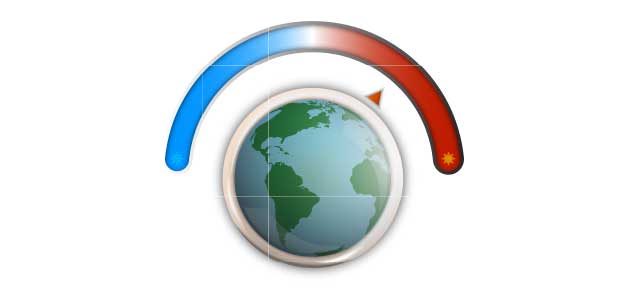
Climate Change vs. Worker Health: How Companies can Protect Employees amid Rising Climate Temperatures and Comply with the New OSHA Directive on Heat Illness Prevention
- By Xavier Alcaraz
- Sep 24, 2021
Climate change has caused our planet significant disruption, triggering severe weather disasters that span multiple states, such as wildfires in the west, hurricanes in the south and flooding in the northeast. First responders, clean-up and restoration crews, utility workers and others supporting relief efforts are often exposed to extreme heat under hazardous working conditions. With longer, hotter summers, climate change has also impacted the safety of those working under these more routine extreme conditions, including in the construction, utility, landscaping, refinery, agriculture and security industries.
The CDC reports that more than 67,000 individuals visit the emergency room and more than 700 people die from heat-related health issues each year, making heat the nation’s leading weather-related killer. Meanwhile, a joint report by NPR and Columbia Journalism Investigations found that at least 384 workers in the last decade died from heat-related exposure. These statistics are rising alongside surging temperatures, with 2021 reported as the hottest summer on record, even surpassing the extreme heat of the dust bowl years.
After several states such as California, Washington and Oregon instituted heat illness prevention regulations, OSHA will follow by implementing an enforcement initiative as part of a National Emphasis Program on preventing heat-related illness to further safeguard workers’ health. This will be followed by a notice of proposed rulemaking in October 2021 for a Federal OSHA standard for heat illness prevention for indoor and outdoor environments.
If you have employees who work outdoors or in hot conditions indoors, consider implementing a three-pronged, risk-based approach for managing heat illness at your place of work.
Prong 1: Identify “At-Risk” Workers and Work Activities
Managers, supervisors and safety personnel must first develop an attunement to their employees’ working conditions by directly engaging with stakeholders. Currently, a communication gap exists between workers and managers, as they often do not experience the sweltering conditions in the same way as their employees. For example, if workers are performing strenuous labor in direct sunlight and must wear heavy clothing or PPE, even mild temperatures can make them vulnerable to heat illness.
Organizations and their employees should work together to perform heat stress risk assessments of work activities for both indoor and outdoor settings. An at-risk screening checklist, such as the HSE UK (United Kingdom’s version of OSHA) “Heat Stress Observation Checklist,” helps identify and prioritize heat illness prevention efforts. The American Conference of Governmental Hygienists, an independent organization that produces guidelines for occupational health and safety, offers the 2021 Threshold Limit Values guide that takes a quantitative approach to assessing heat stress risk.
If companies involve their employees in assessing heat-related risks, it will serve to better identify latent risks and contribute to risk mitigation measures while also grasping the challenges that rising temperatures pose to job execution.
Prong 2: Implement a Heat Illness Prevention Program
If through your risk assessment process, you identify employees that are at risk for heat stress, you need to develop and implement a written heat illness prevention program that balances job requirements alongside workers’ safety to support healthier work conditions.
A heat illness prevention program, which can utilize information and resources from Federal OSHA, NIOSH and Cal-OSHA should include policies and procedures on:
- Program roles and responsibilities of managers, supervisors and workers
- At-risk work activities
- Planning, prevention and protection measures
- Regular monitoring of weather and employee health
- Training and awareness, including prevention measures and recognizing risk factors and symptoms around heat illness
- Emergency response plan for workers exhibiting symptoms of heat illness
An important consideration for managing worker safety is a periodic review of company policies, procedures and contracts that may contribute to worker risk. For example, some company contracts incorporate monetary incentives for early project completion or penalties for missed deadlines. These contracts often do not include force majeure provisions for worker safety, such as extreme temperatures. Consideration of this aspect during contract negotiations or periodic internal procedure reviews can help adjust business policies that are not conducive to worker safety.
Prong 3: Building Well-being: Healthy Workers are Loyal and Productive Workers
Many studies show that companies invested in safety programs also have more productive and loyal workforces. Increasingly, employees are considering safety and wellness programs in their decision to join or leave a company. In this way, the heat illness prevention program would serve as a key component of a broader well-being program modeled by the recently published global standard ISO 45003:2021 - Psychological Health and Safety at Work.
Recent technology advancements are making it easier for organizations to implement heat illness mitigation measures. For example, cooling vests help lower body temperature, advanced clothing fabrics and PPE offer cooling properties, new mobile apps monitor weather conditions and heat index real-time and wearable smart-monitors measure body temperature to ensure workers receive substantial rest time.
As climate change continues to disrupt our world, companies must be proactive in assessing workers’ heat illness risk and invest in and integrate these health and safety initiatives into a robust well-being program.